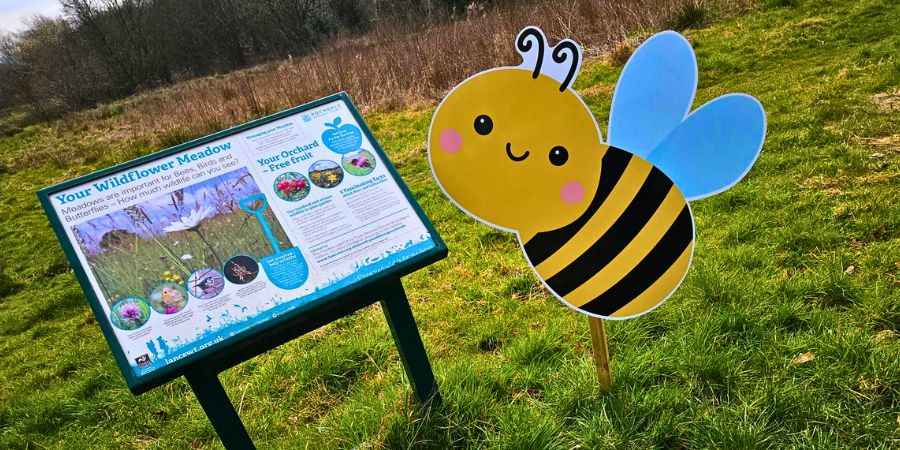Nature-friendly meadows
We're changing the way we maintain areas of parks, open spaces, and designated verges to make these into nature-friendly meadows.
Nature-friendly meadows are areas where closely cut grass will be replaced with meadow grassland, including wildflowers packed with pollen and nectar for bees and insects.
Which wildflowers will be planted?
The sites will be home to a wildflower mix, including Yellow Rattle and 29 other native species, which will bloom from March to mid-September. We aim for the blooms to return year after year.
Along with attracting bees and butterflies, the inclusion of common Catsear, Rough Hawkbit, Knapweeds, and Scabious will also attract birds.
Which areas are being improved with nature-friendly meadows?
You will be able to see which areas have been designed as nature-friendly meadows by our bee sign, which will mark the space as a developing wildflower meadow.

Look out for our bee signs to find our nature-friendly meadows.
You can find our nature-friendly meadows:
- Heywood
- Cherwell Avenue
- Rochdale South
- Balderstone Park
- Broadfield Park
- Rochdale North
- Syke Road
- Cronkeyshaw Common
- Pennines
- Milnrow Memorial Park
- Middleton
- Mere Avenue
These areas will be monitored and maintained by our grounds staff.
Why are we creating nature-friendly meadows?
We're creating nature-friendly meadows because:
- We want to make the borough more biodiverse and improve the natural beauty of our open spaces.
- We need more areas for flowers to grow. According to the Royal Horticulture Society, 97 per cent of wildflower meadows in the UK have been lost since 1945. One of the biggest problems for pollinators is a lack of flowering plants, especially those packed with pollen and nectar.
- Bees and butterflies benefit our climate by maintaining healthy soil, recycling nutrients, pollinating flowers and crops, and controlling pests.
- The European Commission says 10 per cent of pollinating insects are on the verge of extinction, and a third of bee and butterfly species are declining. We hope these meadows will increase the number of insects and wildlife across the borough for all our residents and visitors to enjoy.
- We're exploring ways to maintain and manage public open spaces to reduce our carbon footprint through less intensive mowing.
- Planting wildflower meadows has been identified as a way to capture more carbon in the soil.
- Wildflower meadows can absorb excess water and release it more slowly. This can act as natural flood management and reduce soil erosion.
Get in touch
If you’re interested in learning more about wildflower meadows or would like to arrange an educational visit, please get in touch using the contact details on this page.

